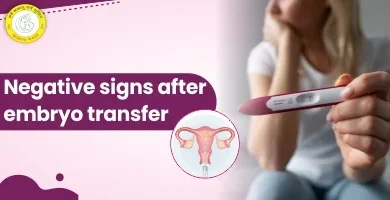Is laparoscopy necessary for Infertility?

Infertility can be a challenging issue for women who are unable to conceive. However, laparoscopy is one method that can improve your chances of getting pregnant. Laparoscopy is a safe and effective way to evaluate the reproductive system and diagnose possible causes of infertility. IVF can be a challenging experience, both emotionally and physically. There is always hope. As a relief, you can get all the details about the treatment. It’s like a strong desire to know that there is still hope.
In this Article
What Is Laparoscopy?
Laparoscopy is a minimally invasive surgical procedure using a fiber-optic telescope (laparoscope) inserted through small abdominal incisions. Here’s how it works:
- Step 1: Carbon dioxide gas gently inflates the abdomen for better organ visibility.
- Step 2: The laparoscope, inserted near the navel, transmits images to a monitor.
- Step 3: Additional tiny incisions allow surgical tools to address issues like scar tissue or endometriosis.
Performed under general anesthesia, it’s both diagnostic and therapeutic, often completed in hours with minimal scarring.
Why Laparoscopy Is Used for Infertility
Laparoscopy is a highly efficient, well-designed method that can be used to determine female infertility. Laparoscopy can detect infertility for the following reasons:
- Scar tissue
- Blocked fallopian tube
- Fibroid tumors
- Any abnormality in the uterus, ovary, or sperm
- Endometriosis (the overgrowth of tissues within the uterus).
When Should You Consider Laparoscopy?
You have tried every possible method to conceive including medical quackery and high-tech fertility treatments. It is normal to feel a somber silence. However, you might be able to find the root cause of infertility and then use that information to help you with your fertility treatment. Laparoscopy can do precisely that. Talk to IVF Specialist. Laparoscopic treatment can be used to treat infertility problems that are not caused by a specific cause.
This procedure is both a diagnostic and a surgical procedure. It is used to perform a biopsy in cases with cysts or overgrowths of the uterus. These could be the causes of infertility. This treatment can also be used in cases of:
- Pelvic pain
- Scar tissue
- Abdominal pain
It cannot only diagnose but also treat the problem surgically. Laparoscopy opens up new avenues of hope!
Benefits of Laparoscopy in Fertility Treatment
- Accurate Diagnosis: Identifies hidden issues like mild endometriosis.
- Immediate Treatment: Removes cysts, unblocks tubes, or excises scar tissue during the same procedure.
- Improved IVF Success: Addressing problems like hydrosalpinx beforehand enhances embryo implantation rates.
- Faster Recovery: Return to daily activities within days, with minimal discomfort.
- Success Rates: Studies show 30–36% pregnancy rates within a year post-laparoscopy for unexplained infertility.
What to Expect After Laparoscopy
- Recovery Timeline: Most resume normal activities in 1–3 days. Full recovery takes 1–2 weeks.
- Pain Management: Mild abdominal soreness is common; prescribed medications ease discomfort.
- Follow-Up: Wait 2–3 menstrual cycles before IVF to ensure optimal healing.
Book an Appointment with the best IVF Center in Patna for fertility concerns
Conclusion
A laparoscopy is a tool that can be used to diagnose and operate fertility treatments. Laparoscopy should be reserved for couples undergoing essential infertility evaluations, including ultrasound, HSG, and semen analysis. Laparoscopy can uncover reproductive issues that are not easily detected by other methods. It can also restore fertility to sub fertile couples trying for natural or assisted conception.
FAQs
Laparoscopy for infertility cost
The price tag for laparoscopy can fluctuate based on factors like the hospital’s reputation, the city you live in, and the complexity of your case. Generally, the cost starts around Rs. 20,000 and can go up to Rs. 70,000 or even higher. It’s essential to remember that this is just a ballpark figure, and the actual cost might differ.
Disadvantages of laparoscopy for infertility
Like any surgery, laparoscopy carries certain risks. These can include infection at the incision site, excessive bleeding, accidental damage to nearby organs, and complications related to anesthesia. However, these risks are usually low when performed by experienced surgeons.
Is laparoscopy for infertility painful
It’s normal to feel some soreness or discomfort in your abdomen after the procedure. Your doctor will prescribe pain relievers to help manage the pain. Most women find the discomfort manageable.
Time gap between laparoscopy and IVF
It’s recommended to wait for at least 2-3 menstrual cycles after laparoscopy before starting IVF treatment. This allows your body to recover fully, and any potential inflammation or scarring to heal properly.
Laparoscopy for infertility success rate
The chances of success with laparoscopy vary based on the reason for infertility. If the issue is blocked fallopian tubes, surgery to repair or remove them can significantly improve fertility. However, if the problem lies elsewhere, the success rate might be lower.
When to do laparoscopy for infertility
Your doctor might suggest laparoscopy if other diagnostic tests, such as ultrasound, have shown possible problems in your reproductive organs. These issues could include endometriosis, pelvic inflammatory disease, or blocked fallopian tubes. Laparoscopy can help confirm the diagnosis and sometimes treat the underlying condition.
Can it treat endometriosis?
Yes—excising endometrial tissue often improves fertility.



